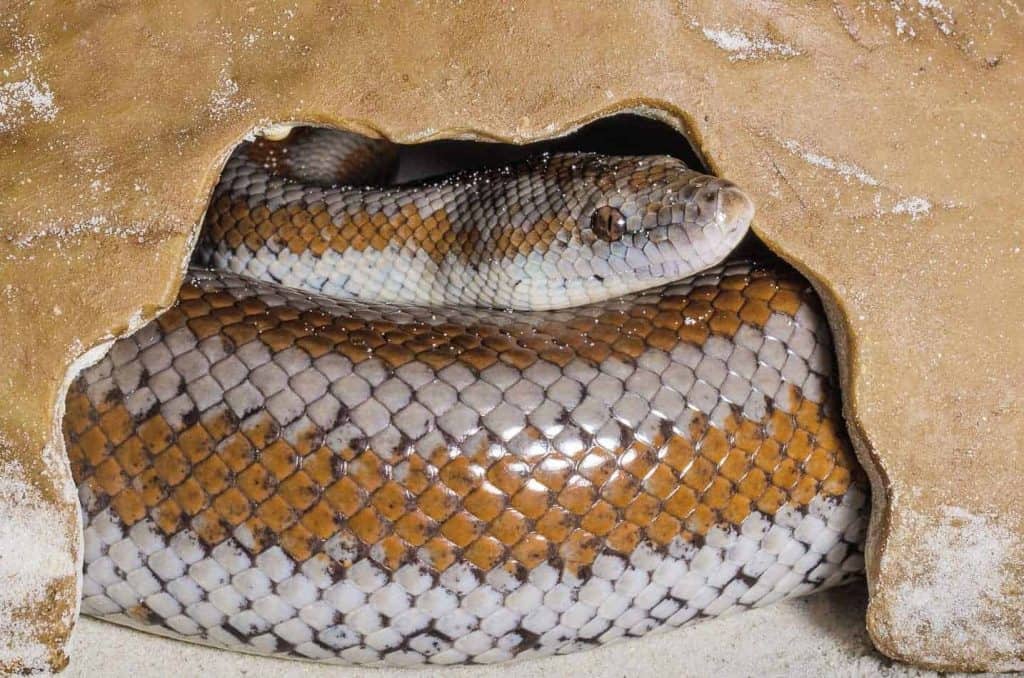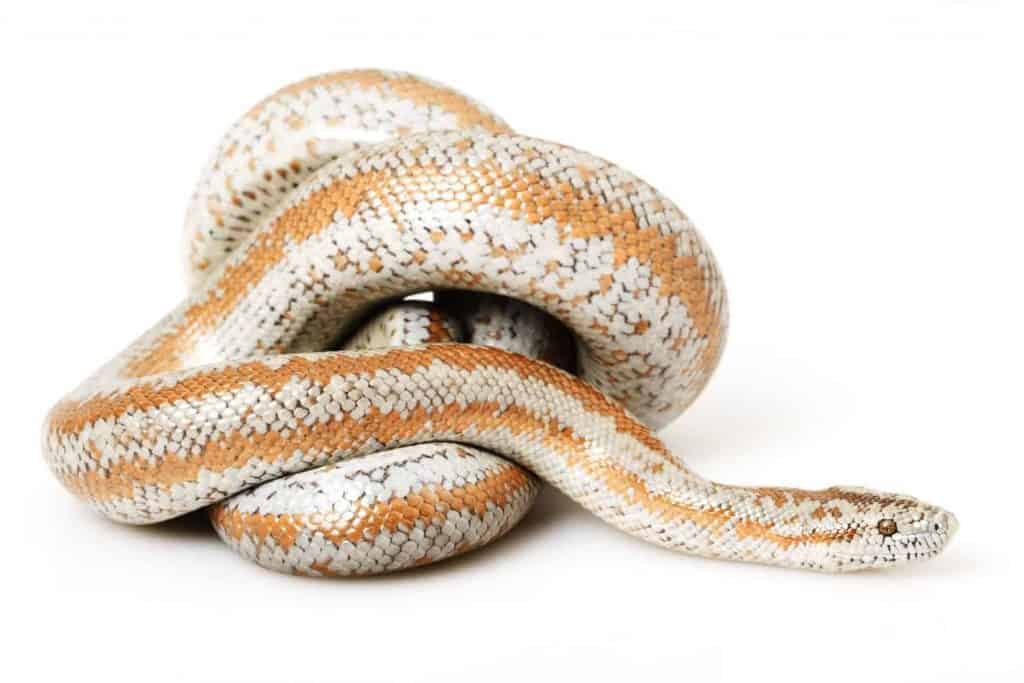What’s the Temperament of a Rosy Boa Snake?

Rosy boa snakes have always seemed like a cool pet to me. But under all that scaly awesomeness, what’s a rosy boa really like? I did a little research and here is what I found.
What is the temperament of a rosy boa? Rosy boas are well-known for their docile, friendly demeanor. In the rare instance that a rosy boa becomes aggressive, it is generally due to food-related issues and not temperament. Rosy boas are some of the friendliest snakes out there, but, like any creature, temperament can be influenced by a variety of conditions and the individual personality of the snake.
By reading on, you can learn exactly why your snake may be acting out and how you can help to remedy this behavior. I have also included some tips on how to avoid a cranky snake too.
Temperament of Rosy Boas Living Together
Rosy boas can live well together, but there is some potential harm. As with any snake, competition for food and the best spots in the tank can be common. It is always a good idea to feed your boas separately if you do opt to have them in the same tank.
A good way to maximize space for rosy boas living together is to add a rack system that the boas can climb around on.
Generally, you shouldn’t see much of a difference between rosy boas in individual tanks from rosy boas in the same enclosure. Buying individual reptile tanks tends to be cheap anyway, but if it sits out of your price range, then one enclosure should be fine.
My Rosy Won’t Let Me Handle Him, Is There Anything I Can Do?
Some rosy boas can be shy about being handled at first, but do not fret! There are a lot of things that you can do to get your boa socializing a bit more. One thing you can do is make sure you wash your hands after feeding. Remember that the rosy boas’ sense of smell is extremely refined.
If you have any hint of rodent on your fingers, your boa may mistake your hand as a treat and take a big bite.
In general, it’s a good idea to wash your hand both before and after handling your rosy.
Another way you can train your snake to be more social is to practice regularly. It may seem intuitive, but after one bite from a boa, a lot of owners chalk it up to their boas bad attitude and give up, but it doesn’t have to be so. Frequently take your rosy out of his cage and let him slither around a bit.
Be careful not to handle him too aggressively or squeeze him

Ensuring the Happiness of Your Rosy Boa
Think of your best friend. I’m sure your friend is kind and loving. I bet your friend even volunteers at the local animal shelter occasionally. Wow, what a guy! Now think of your friend when he’s hungry. Different story. I bet he gets mad and surly. What do you do to help? Give him a Snickers?
Whatever you may do to help your friend, that same care needs to be used in helping your rosy boa. Now I’m not saying you should give your boa a Snickers but you should be aware of the most common factors of boa related moodiness.
Some of the most common reasons your boa may be unhappy are:
– Hunger
– Inadequate habitat
– The personality of the snake.
Let’s examine a few of the particulars of the reasons listed above.
Hunger has a huge impact
One of the most common areas of trouble that rosy boa owners have encountered is with feeding. Rosy boas are notorious for being stingy eaters. Don’t give up, your boa will take to his mice treats eventually.
If your boa isn’t fed regularly, expect a testy attitude.
Your snake may lash out and bite your arm, and unlike many other boas, our friend here has teeth and he knows how to use him. As a boa, you may also feel him constricting around your arm when you pick him up. This is almost a sure sign that rosy needs to be fed. Set a feeding schedule, and diligently follow it.
Another reason your snake may be in a bad mood is due to your boa enclosure. Much like humans, the rosy boa tends to freak out when placed in an unfamiliar environment. If you recently purchased your rosy and he doesn’t seem too keen on friendly interactions, give it time. He may need a few days to adjust. The amount of space in the enclosure can be critical to maintaining your rosy’s happiness as well.
For a single rosy boa tank, anywhere from 10 to 15 gallons is recommended.
Anything less feels very cramped to a snake that can easily grow up to 4 feet in length. Once you assure yourself that you have the proper sized tank, the next step is to obtain all the proper amenities. The rosy boa tends to be a bit of a recluse and loves to hide. Placing artificial trees, large rocks, or any standard hiding box, will ensure that your rosy remains in a much better mood. Heating and lighting tend to be easy for the rosy boa as well. Lighting in a rosy cage is not necessary unless you wish to better see your pet.
Heating, on the other hand, can be very important. The rosy boa needs a range of temperatures to stay sanguine. If you notice any restlessness in your boas temperament, it is more than likely due to excessive warm temperatures in the enclosure.
Ensure that your tank has a wide range of temperatures from 65 degrees Fahrenheit at the cool end of the tank, to 90 degrees Fahrenheit at the warm end.
It is also a good idea to let the tank settle to a cool 55 degrees Fahrenheit during the winter months to allow your snake some rest. Remember, your snake’s habitat is crucial. If your rosy seems to be in a bad mood for no apparent reason, it may be due to his habitat.
The final reason your boa may be angry is simply the personality of your rosy. Just like people, sometimes rosy boas have bad days. I don’t always wake up on the right side of the bed either.
Personality traits fluctuate from rosy boa to rosy boa.
While it is very rare, I have heard of some rosy boas that are just mean. If all else fails, show your snake some love and keep on smiling. Be happy that you have a cool pet boa that’s a bit of a bad boy.
